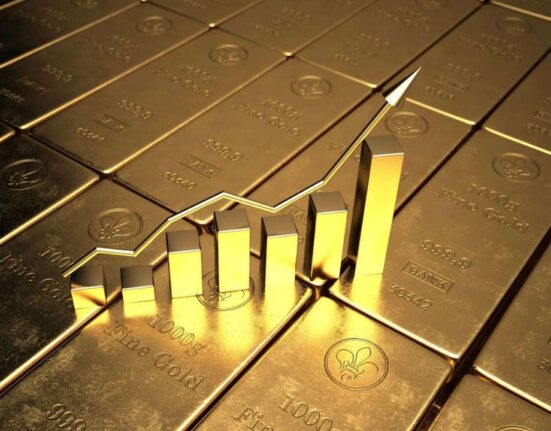White Gold to cotton was historically a valuable commodity due to its importance in textile production. Its significance in trade and economy, especially during the colonial era, earned it the nickname “white gold” due to its economic importance and profitability.
The Gold
Gold has captivated human civilization for millennia, revered for its lustrous beauty, intrinsic value, and myriad applications. Gold has maintained its allure from ancient to modern times, serving as a symbol of wealth, power, and prestige. This comprehensive guide delves into the multifaceted world of Gold, exploring its properties, production, economic significance, cultural relevance, and much more.
Introduction to Gold
Gold, a precious metal with the chemical symbol Au, holds a special place in human history and culture. Since ancient times, its gleaming yellow hue and rarity have made it a sought-after commodity. Gold has been used for various purposes, from currency and jewelry to industrial applications and investments.
The shimmering realm of Gold, this section serves as a gateway to understanding the profound significance and diverse applications of this precious metal throughout history and in contemporary society.
The Physical Properties of Gold
Gold possesses several unique physical properties that contribute to its desirability. Its distinctive yellow color, unparalleled density, and remarkable malleability make it stand out among other metals. Gold’s ability to be hammered into thin sheets and drawn into delicate wires underscores its versatility and appeal.
The Physical Properties of Gold encompass its distinctive appearance, characterized by a radiant yellow hue, unparalleled density, and exceptional malleability. These attributes contribute to its versatility and desirability across various industries and applications worldwide.
Gold Mining and Production
Extracting Gold from the earth involves various methods, including placer mining, hard rock mining, and cyanide leaching. Major gold-producing countries such as China, Australia, and Russia play a significant role in global gold production. However, gold mining also raises environmental concerns due to habitat destruction, pollution, and social conflicts.
Gold mining and production involve the extraction of Gold from the earth using various methods, such as placer mining and cyanide leaching, with significant contributions from major gold-producing countries. This process encompasses both the physical extraction of Gold and its subsequent refinement into usable forms.
The Economic Importance of Gold
Gold holds immense economic significance, serving as a store of value, a medium of exchange, and a hedge against inflation. Beyond its traditional roles, Gold plays a crucial role in jewelry making, technology, and industry. The price of Gold is influenced by factors such as geopolitical tensions, inflation, and central bank policies.
Gold holds immense economic significance, serving as a crucial store of value, a widely traded commodity, and a key component in various industries such as jewelry, technology, and finance. Its enduring allure and intrinsic value contribute significantly to global economies and financial markets.
Gold as an Investment
Investing in Gold has long been a popular strategy for diversifying portfolios and preserving wealth. Investors can choose from various forms of gold investments, including physical Gold, gold-backed ETFs, and mining stocks. Gold’s historical performance as a safe-haven asset has made it an attractive option for risk-averse investors.
Investing in Gold offers individuals a reliable hedge against inflation and economic instability. With its historical track record as a haven asset, Gold is a tangible store of value, providing investors with a sense of security and diversification in their portfolios.
Cultural Significance of Gold
Gold holds deep cultural significance across different societies and civilizations. From ancient Egypt to modern-day weddings, Gold has been used to symbolize prosperity, purity, and divine blessings. Its association with wealth and royalty has cemented its status as a symbol of prestige and luxury.
The cultural significance of Gold transcends time and borders. It symbolizes wealth, prestige, and divine blessings in various societies. Gold’s gleaming allure embodies prosperity and tradition from ancient civilizations to modern-day celebrations, enriching cultural narratives and ceremonies worldwide.
Gold and Wealth
Throughout history, Gold has been synonymous with wealth and prosperity. Its scarcity and enduring value have made it a preferred asset for preserving and passing on wealth through generations. Gold’s timeless allure continues to attract investors, collectors, and connoisseurs seeking to acquire a piece of its timeless legacy.
The enduring connection between Gold and prosperity delves into its historical significance as a symbol of affluence and its role as a store of value, offering insights into its allure for generations seeking financial security and luxury.
Challenges in Gold Mining and Production
Despite its economic importance, gold mining faces numerous challenges, including dwindling reserves, environmental degradation, and social conflicts. Balancing the demand for Gold with sustainable mining practices is crucial for mitigating the negative impacts of gold production on the environment and local communities.
Navigating the complex landscape of gold mining and production entails facing multifaceted challenges, including environmental concerns, social conflicts, and the depletion of easily accessible reserves, necessitating innovative solutions for sustainable practices.
The Future of Gold
As technology advances and global economic dynamics evolve, the future of Gold remains uncertain yet promising. Innovations in gold extraction techniques and shifting consumer preferences could reshape the gold market in the future. However, Gold’s intrinsic value and enduring allure will likely ensure its continued relevance in a rapidly changing world.
The precious metal awaits evolving dynamics and potential transformations, encompassing technological advancements, shifting economic landscapes, and emerging trends that may redefine its role in global markets and society.
Gold Myths and Misconceptions
Over the centuries, Gold has been shrouded in myths and misconceptions, ranging from its mystical properties to its alleged health benefits. Separating fact from fiction is essential for understanding the true nature of Gold and its role in society. Common misunderstandings surrounding Gold, debunking age-old myths and shedding light on misconceptions. Delving into its mystical allure and perceived health benefits, this section unveils the truth behind the myths, providing clarity and insight.
Gold and Health
While Gold is primarily valued for its monetary and aesthetic attributes, it also has medical applications. Gold nanoparticles are used in diagnostics, drug delivery, and cancer treatment, highlighting the potential health benefits of this precious metal. The intersection of Gold with medical science showcases its applications beyond its traditional roles. From diagnostics to drug delivery, gold nanoparticles exhibit promising potential in revolutionizing healthcare, highlighting this precious metal’s diverse and beneficial aspects in promoting human well-being.
Gold and Geopolitics
Gold’s significance extends beyond economics, influencing geopolitics and international relations. Central banks and governments hold substantial gold reserves as a strategic asset, providing stability and credibility in times of uncertainty. Geopolitical tensions and trade disputes can impact gold prices, reflecting its status as a global barometer of geopolitical risk.
The intersection between the global distribution of gold resources and their impact on international relations, economics, and political dynamics emphasizes how gold reserves and market fluctuations influence geopolitical strategies and diplomatic negotiations.
Environmental Impact of Gold Production
The environmental toll of gold production must be addressed, with deforestation, water pollution, and mercury contamination posing significant challenges. Efforts to promote sustainable mining practices and reduce the environmental footprint of gold production are essential for mitigating these adverse effects.
The consequences and effects on the natural world result from activities related to the mining, extracting, and processing of Gold, including habitat destruction, pollution, and the depletion of natural resources.
Gold Standards
The gold standard, which pegged currencies to a fixed amount of Gold, played a crucial role in shaping the global economy in the past. While the gold standard has largely been abandoned, debates persist about its merits and drawbacks, highlighting the enduring legacy of Gold in monetary systems. Monetary systems where currency’s value is directly linked to a specific amount of Gold. Historically significant, it provided stability and credibility to economies, although its relevance in modern financial frameworks remains subject to ongoing debate.
Unraveling the Secrets of Gold Investment
Few assets gleam as brightly as Gold. This timeless metal has captivated humanity for millennia, embodying wealth, prestige, and stability. Delving into the allure of Gold and its potential as an investment avenue can illuminate a path towar financial security.
The Allure of Gold
Gold has held a special place in human history with its lustrous appearance and scarcity. From ancient civilizations to modern economies, its value transcends time and borders. Gold’s enduring appeal lies in its tangible nature and universal acceptance.
Diversification through Gold Investment
Given the volatile financial landscape, diversification is key to mitigating risk. Gold serves as a reliable hedge against economic uncertainty and market downturns. Unlike paper assets, its intrinsic value remains steadfast, offering stability amidst fluctuating markets.
Harnessing Gold’s Inherent Value
Gold is not subject to inflationary pressures or geopolitical turmoil unlike currencies or stocks. Its value is immune to the whims of central banks or political upheavals. As a tangible asset, Gold provides a sense of security and permanence in an ever-changing world.
Gold as a Safe Haven Asset
Investors flock to Gold as a safe haven during economic turbulence or geopolitical unrest. Its status as a store of value transcends borders, making it a universal refuge in times of crisis. In uncertain times, Gold shines brightest as a beacon of stability and security.
Navigating the Gold Market
Investing in Gold can take various forms, from physical bullion to gold-backed securities. Each avenue offers its own set of advantages and considerations. Whether acquiring physical Gold or investing in gold ETFs, thorough research and due diligence are paramount.
The Role of Gold in Portfolio Diversification
Adding Gold to a diversified portfolio can enhance overall stability and resilience. Its low correlation with traditional assets like stocks and bonds makes it an ideal diversifier. By incorporating Gold into their investment strategy, investors can safeguard against systemic risks and enhance long-term returns.
Embracing the Golden Opportunity
The allure of Gold as a timeless investment remains undiminished. Its intrinsic value, stability, and universal appeal make it an indispensable asset in any investor’s toolkit. By understanding the dynamics of the gold market and harnessing its potential, investors can confidently navigate uncertain times and secure their financial future.
Some Points of Gold

Gold Price: The current value of Gold per unit weight, typically measured in troy ounces or grams. It fluctuates based on market demand, economic conditions, and geopolitical factors.
Gold Price 22k, 20k, 18k, 14k: These denote the purity of Gold in karats. 24k Gold is considered pure Gold, while the others have varying degrees of alloy mixed in. The price of Gold varies depending on its purity level.
Gold Price Live: Refers to real-time updates on the price of Gold, allowing investors and traders to monitor price fluctuations as they happen. This information is crucial for making timely investment decisions.
Gold Price Per Gram: This indicates the cost of Gold per gram of weight. It’s a common unit of measurement, especially for smaller transactions and purchases of gold jewelry or small bullion bars.
Gold Price History refers to the historical data of gold prices over a specific period. Analyzing the price history helps investors understand past trends, patterns, and factors influencing Gold’s value, aiding in making informed investment decisions.
Gold Price Chart 10 Years: A graphical representation illustrating the fluctuation of gold prices over the past decade. These charts provide a long-term perspective on Gold’s performance, aiding investors in assessing its potential as a store of value or investment asset.
Gold Bar: A rectangular gold bullion, typically refined to a high purity level. Gold bars come in various weights and sizes and are popular for investors seeking to own physical Gold as part of their investment portfolio. They are valued based on their weight and purity.
Conclusion
The White Gold symbolizes salt’s unparalleled significance throughout history. From its role as a currency to its vital importance in preserving food and sustaining life, salt has left an indelible mark on human civilization. Its transformative power has shaped economies, cultures, and societies worldwide, highlighting its enduring status as a precious resource deserving of reverence and respect.
FAQ
How Much is 1 oz of Gold Today?
White Gold, Today, 1 ounce of Gold is valued at approximately $1,700 to USD 1,800. However, gold prices fluctuate constantly due to various factors such as market demand, geopolitical events, and economic conditions.
What’s Today’s Price of Gold?
White Gold, The price of Gold fluctuates constantly due to various factors such as market demand, economic conditions, and geopolitical events. To obtain the current price, it’s advisable to check financial news websites or consult a reliable financial source.
What Will Gold Be Worth in 5 Years?
White Gold, Predicting the exact value of Gold in five years is speculative. Various factors, such as economic conditions, geopolitical events, and market trends, can influence its price. Analysts often use historical data and current trends to make projections, but a definitive answer is yet to be given.
What is the Price of Gold Coins Today?
White Gold, The price of gold coins varies depending on factors such as purity, weight, and market demand. It is advisable to check with reputable dealers or financial websites for the most accurate and up-to-date pricing information.
Is it Worth Buying 1 oz of Gold?
White Gold, Buying 1 oz of Gold can be a wise investment for diversifying your portfolio and hedging against economic uncertainties. Gold tends to hold its value over time and can serve as a haven asset during times of market volatility.
How Much is 1 oz of 24k Gold Worth?
White Gold, As of my last update, the price of 24k Gold fluctuates constantly based on market conditions. On average, 1 ounce of 24k Gold is worth approximately the current market price per ounce. You should check the latest rates for an accurate value.




